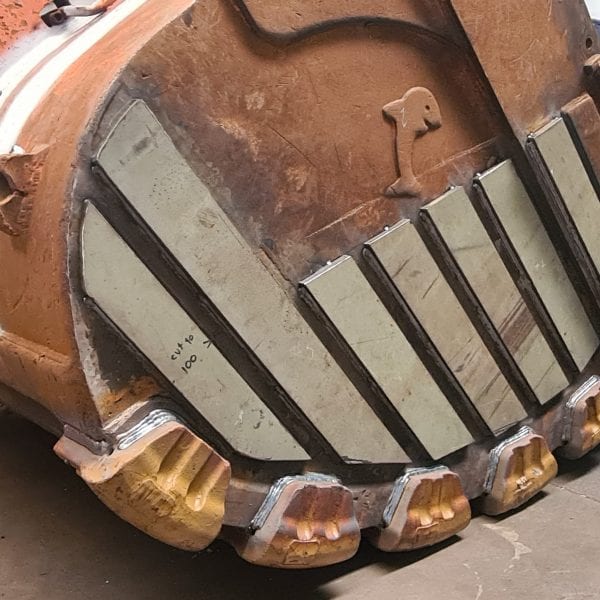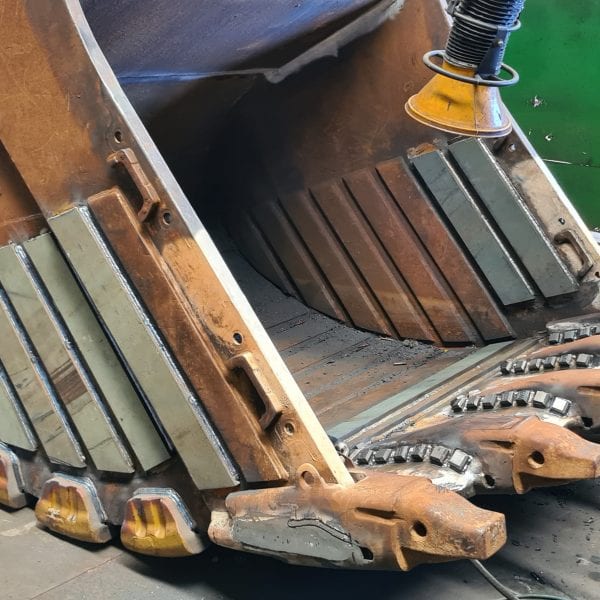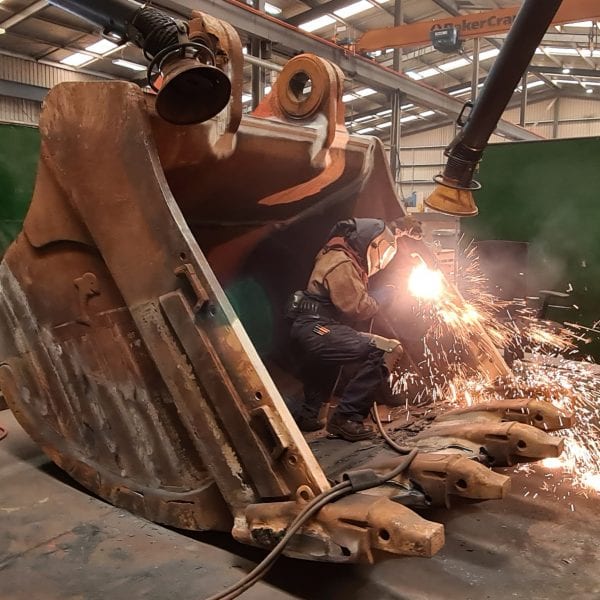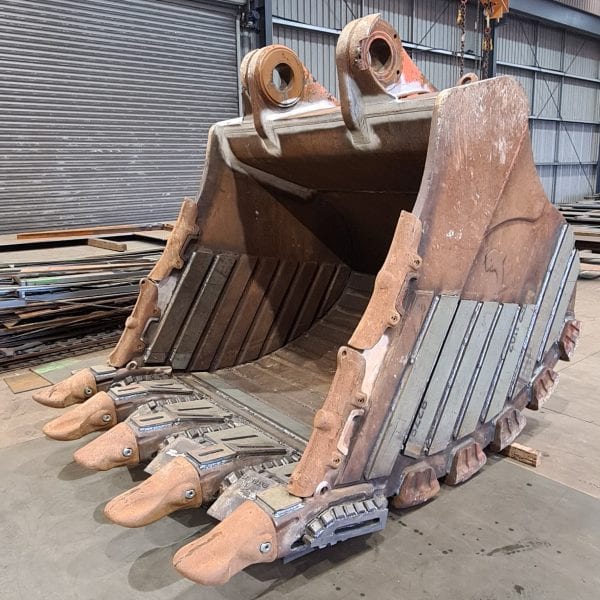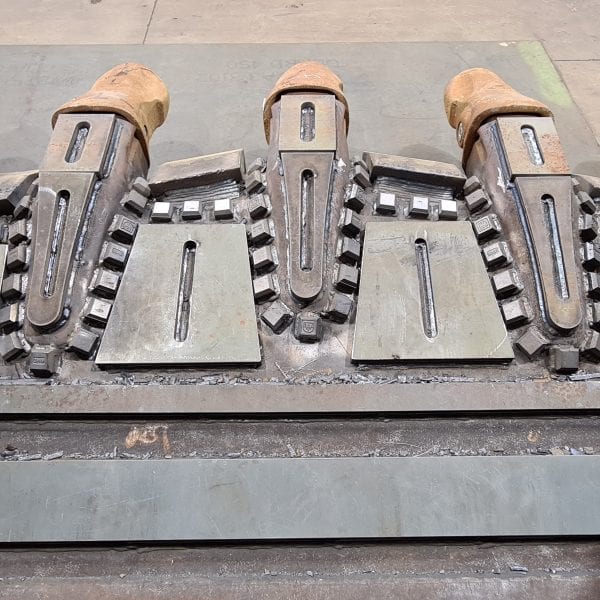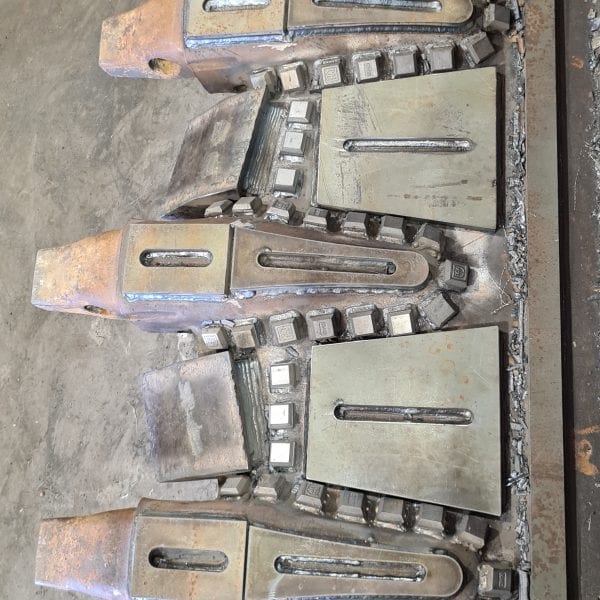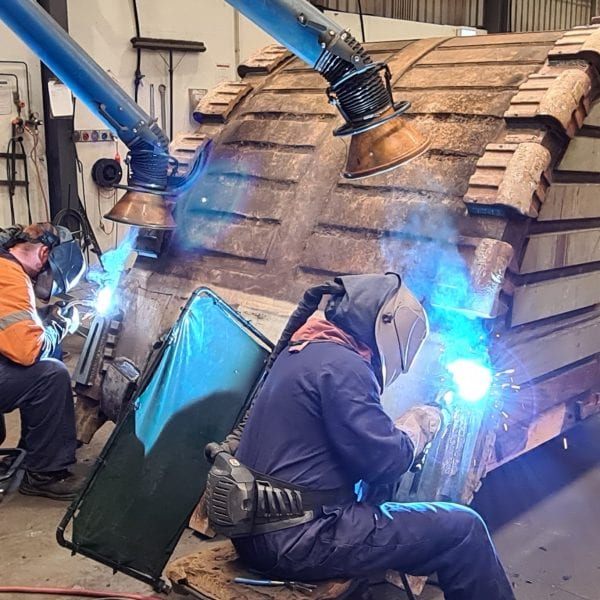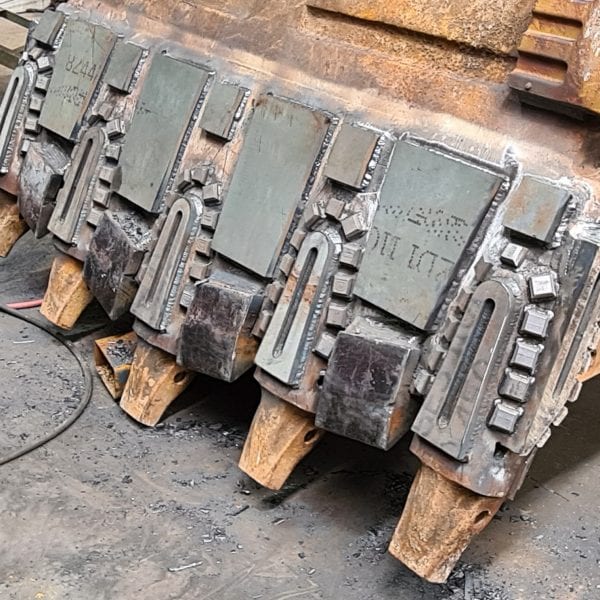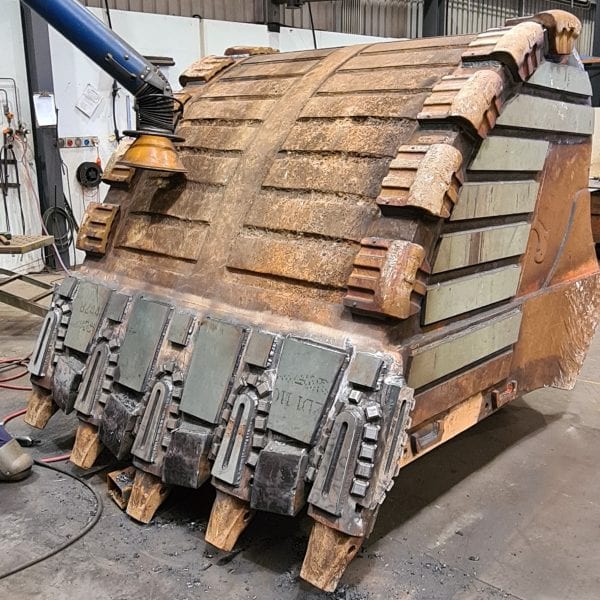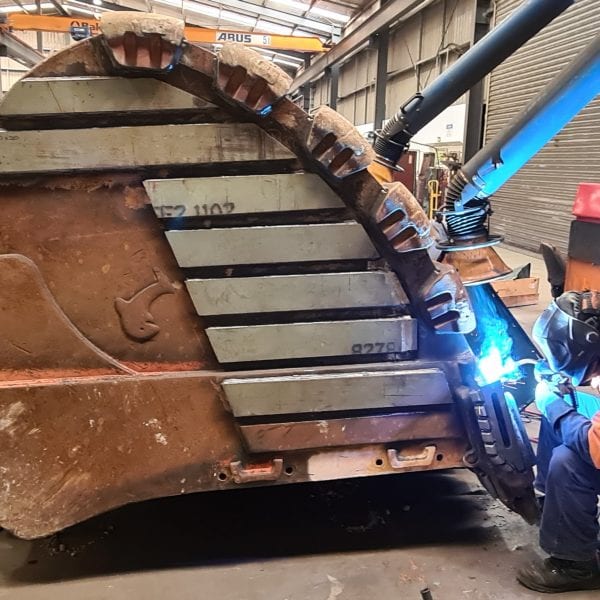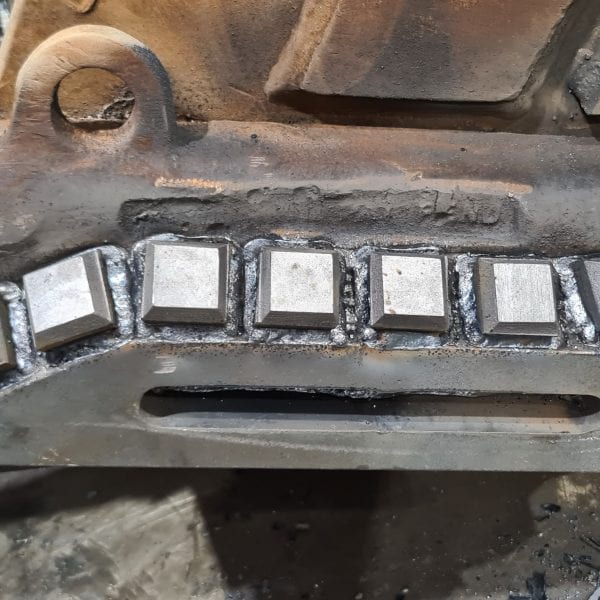Get some inspiration for armouring your Buckets from this big one!
A 5.2m3, 8 tonne, Hitachi EX1200 rock bucket came into our workshop last month for a full refurbishment which included cutting off worn plates, repairing cracks and refitting new wear plates in the high wear areas. Working in one of the hardest, most abrasive gold mines on the West Coast, this bucket needed a lot of wear protection in the right areas to last the distance – it came to the right place for that!
It’s important to look after the high wear areas on your buckets to prevent unexpected down time & breakages. Below is a few tips of what to keep maintained;
- Ends of the cutting edge – keep these built up & protected to prevent the outside adapter welds from washing away causing adapter breakage.
- Between the adapters – weld on or pin on lip protectors are available to fit in this area to prevent the cutting edge wearing & the adapter welds from washing away.
- Top & bottom of the adapters – adapters will wear thin and break prematurely if they’re not protected, keep them covered with wear plates or chock blocks.
- Top & bottom of the cutting edge – the cutting edge on larger buckets is a softer, structural grade of steel (G780) for high strength and needs to be covered to stop it wearing thin & losing its structural strength.
- Heel Shrouds & Wear Strips – watch the underside, inside & corners of your bucket as these are high wear areas & must be protected to prevent holes in your sides or floor.
- Adapter welds – weld washing is the biggest cause of adapters breaking. If the welds wear too thin, cracks will form causing breakage & also cracking into the cutting edge.
- Pre & Post heating – A critical factor for successfully welding high tensile steels on buckets is to pre heat to 150-180 degrees BEFORE welding, weld with a flux core wire & allow slow cooling using welding blankets to cover the welded area. Once cooled, heat up the welded area again to 220-250 degrees and cover with blankets to allow slow cooling. (this post heat has now destressed the welds and will greatly reduce chance of cracking)
- Eliminate weld tails – the start & stop points of welding is the weakest areas where cracks will initiate from. Where possible, run your welds past the main welded area & back gouge the weld to remove the tails, then grind it smooth. Weld tails can also be removed by grinding them out.
Remember, “the Cutting Edge is the strength of your bucket” so look after it! Talk to us today about your wear & tear issues and fix it before it breaks! Call 0800 654 323 to discuss your needs now.

